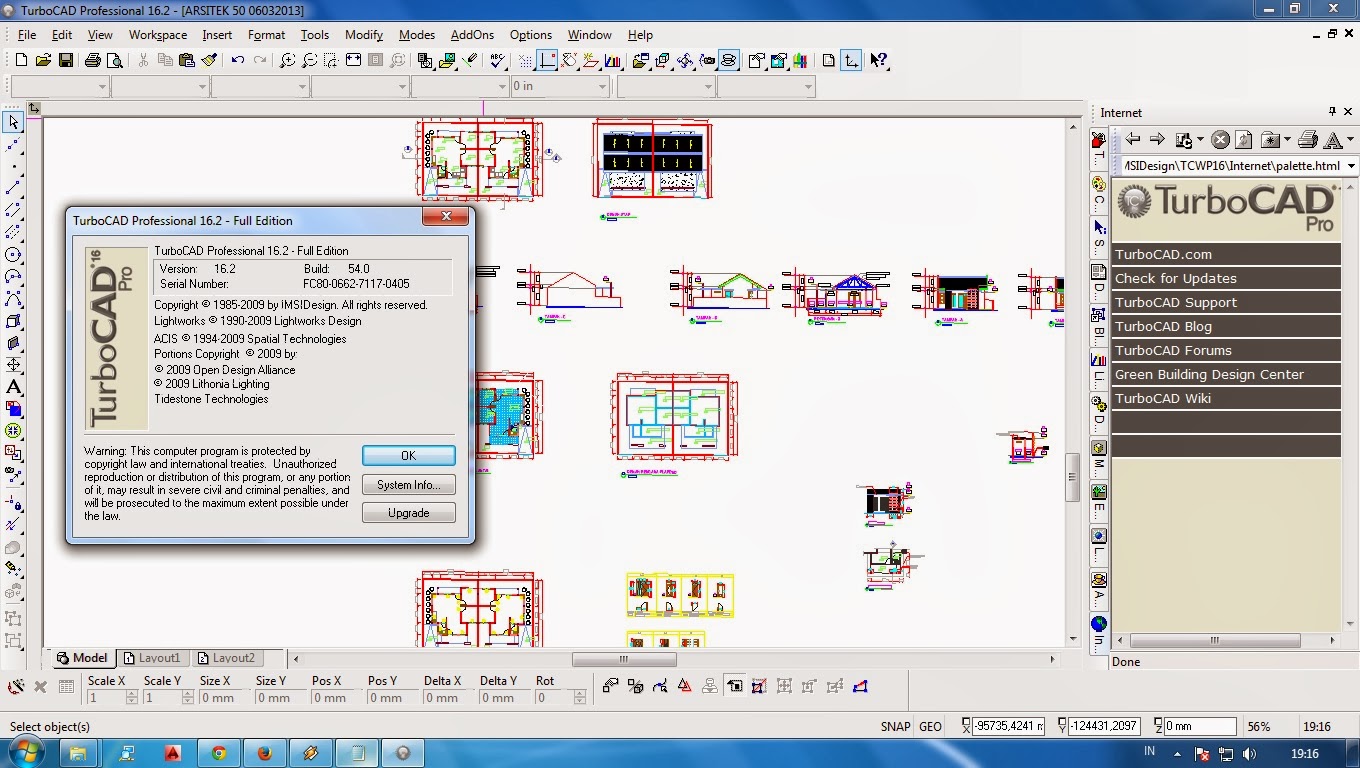

There may resources or individuals that can get you over the hump. If you are committed to TurboCad, thats fine too. Have a look at the range of models being created by people at various skill levels.
#Turbocad for mac manual free#
But I'd encourage you to just watch some free & available YouTube videos to get a sense. It seems to have a wide following & therefore lots of diverse learning resources in multitude of formats. Even though Fusion has been playing games with pricing lately, its still seems to be good bang for buck. So investing those hours into a rewarding path vs a dead end deserves some up front consideration. I don't use Fusion or OnShape myself but I recognize the elements & capability of what makes it much more comparable to industrial tools like Solidworks or Inventor, but at reduced price. But for what we (model engineers) do, its not the weapon of choice. But it wasn't really suited (or designed for) more mechanical type work like assemblies. I used Rhino for a while which was a great 3D program, similar to Acad in its 2D workflow, very powerful features. That's an understandable recipe for frustration. And potentially doing this in a partial vacuum with less instructional resources. Trying to grasp the nuances of how they accomplish 3D (which may or may not even resemble how the mainstream apps work). So you could find yourself fighting on multiple fronts. Some modelers are just not all that good, or very restrictive. They mimicked (and often improved upon) Acad & is probably still true today.ģD is another step change but I feel is different evolution. Once you learned the tools & concepts, it wasn't too bad to hop across to other 2D platforms because the concepts were essentially the same.
#Turbocad for mac manual manual#
I came into CAD from manual drafting by way of 2D Autocad which was kind of 'the' standard back in the day. The only difference between 2 cubes and a V8 is the number/complexity of parts & mates. A collection of parts with some mates is called an assembly. There are only actually a handful of unique mates to know, depending on the combination allow you to define pretty much every real world situation. Many options, but you already have an idea of how you want them mated. They can be mated edge to edge, face to face, edge to face, corner (point) to edge or face, this hole concentric to that hole, this axis rotates about that axis. We do it intuitively with our hands on real world objects. The theme that joins 3D part A to part B is generically called 'mates'. You are probably further along than you realize. Great - easy! Join with the first part - totally beyond me at the moment! I can draw in 2D and add a thickness to a part, but then I am stuck with "and now what?" - I am stuck on what do I do next. Although their pricing model is getting more expensive (discussed in another post). There are tons of learning resources for Fusion. Even so, they require a minimum OS version according to link. I'll use the phrase loosely - 'cloud based' application that kind of removes the OS from the issue because you are running it off their server. Or, migrate to something like Fusion 360. And whatever learning resources come along with that.

So that you leaves you to run a 'installed' Cad application that is kind of endorsed by Apple like your TurboCad/Mac example or at least designed to run under their OS.
#Turbocad for mac manual mac os#
Some people may have managed to run it on Mac OS 'emulating' Windows but not sure how successful, its not recommended. Anyways, it was not designed to run on Apple/Mac OS. Currently either Win-10 or Win-7, although I believe v2021 is the last version supporting Win-7. It runs on Windows operating system (OS). Solidworks is not a Microsoft product, it is a Dassault product.


 0 kommentar(er)
0 kommentar(er)
